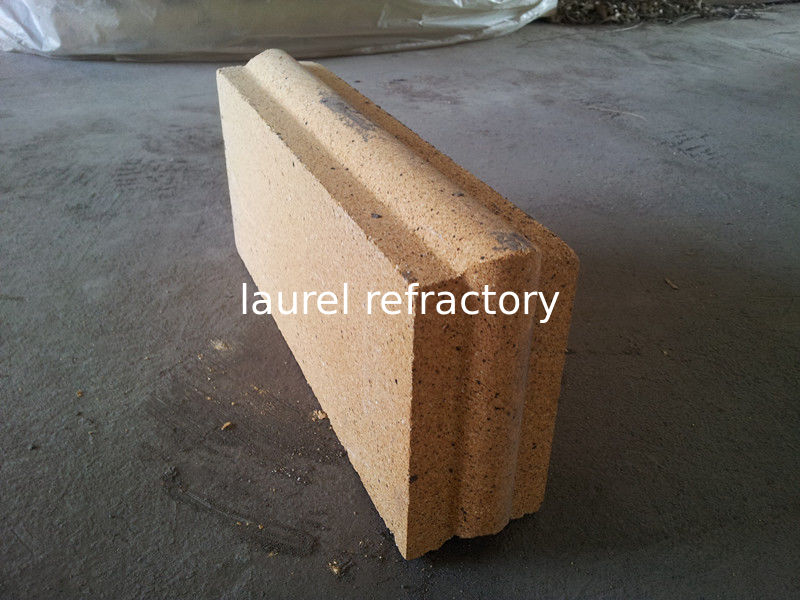 In the construction of a tiled stove, chamotte materials of the so-called 'pottery quality' are used.. Raw materials are mostly raw fireclay, clay, kaolin and syenite. Depending on the proportion of the mixture, fireclay fittings may take on a reddish or yellowish colour when firing. Fittings used for the construction of tiled stoves should be characterized by the smallest possible elongation when heated. The production of chamotte fittings begins with the formation of raw mass into beams in special presses and cutting them into sections. Then the raw fittings obtained in this way are dried for so long, until the residual humidity in the material does not exceed 6 percentage. Now they go to the kiln for firing, in which the temperature prevails from 1000 up to 2000°C. From filling the furnace to receiving the finally fired fireclay tiles, it takes from 10 into 20 days. This time depends on the thickness of the material. Good manufacturers check and sort fireclay tiles. There should be no clear smelting on them, damage or deformation.
In the construction of a tiled stove, chamotte materials of the so-called 'pottery quality' are used.. Raw materials are mostly raw fireclay, clay, kaolin and syenite. Depending on the proportion of the mixture, fireclay fittings may take on a reddish or yellowish colour when firing. Fittings used for the construction of tiled stoves should be characterized by the smallest possible elongation when heated. The production of chamotte fittings begins with the formation of raw mass into beams in special presses and cutting them into sections. Then the raw fittings obtained in this way are dried for so long, until the residual humidity in the material does not exceed 6 percentage. Now they go to the kiln for firing, in which the temperature prevails from 1000 up to 2000°C. From filling the furnace to receiving the finally fired fireclay tiles, it takes from 10 into 20 days. This time depends on the thickness of the material. Good manufacturers check and sort fireclay tiles. There should be no clear smelting on them, damage or deformation.
Tapping also detects invisible damage. Fireclay tiles, that do not meet the standards or have damage, are sorted. ground and re-added to the raw mass, as fireclay granules. The permissible dimensional deviations of fireclay tiles are, depending on the quality, from 2 into 4 percentage. Deflection of tiles with a length of more than 25 cm must not exceed 1,5 Percent. The material of fireclay elements is characterized by different quality. When building a combustion chamber of a foundation furnace, we should remember, that the melting point of the material used is at least 1580°C (Seger cone 26). Because the softening point is lower than the melting point, earlier there is a deformation of fireclay tiles. Manufacturers of heating inserts supply them together with appropriate fireclay linings. Fireclay plates or fittings are made in different sizes. System fittings, which do not need to be trimmed or only to a small extent during the construction of the furnace core, make our work easier and offer high accuracy when fitting them. The minimum density of fireclay plates or fittings used in the construction of furnaces should be in the range from 1,4 into 1,9 g/cm2. For example, a chamotte plate with a density 1,9 g / cm2 and dimensions 30 cm x 15 cm x 4 cm weighs 3,42 Kg. Other advantages are their high heat storage capacity and good durability.
There are cheap fireclay boards on the market, which often exhibit significant deflections and are not made to the required dimensions. Building a furnace will be the easiest, when we use large shapes or chamotte plates. The larger these plates are, the more important is their good quality with little deformation. Execution of straight masonry with curved fittings requires a thicker layer of plaster. We will compensate for a slightly higher purchase price of better chamotte boards with shorter working time and great satisfaction in its performance.